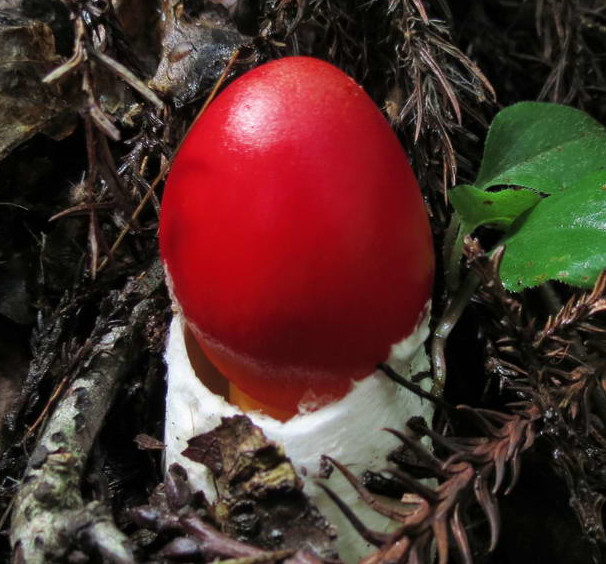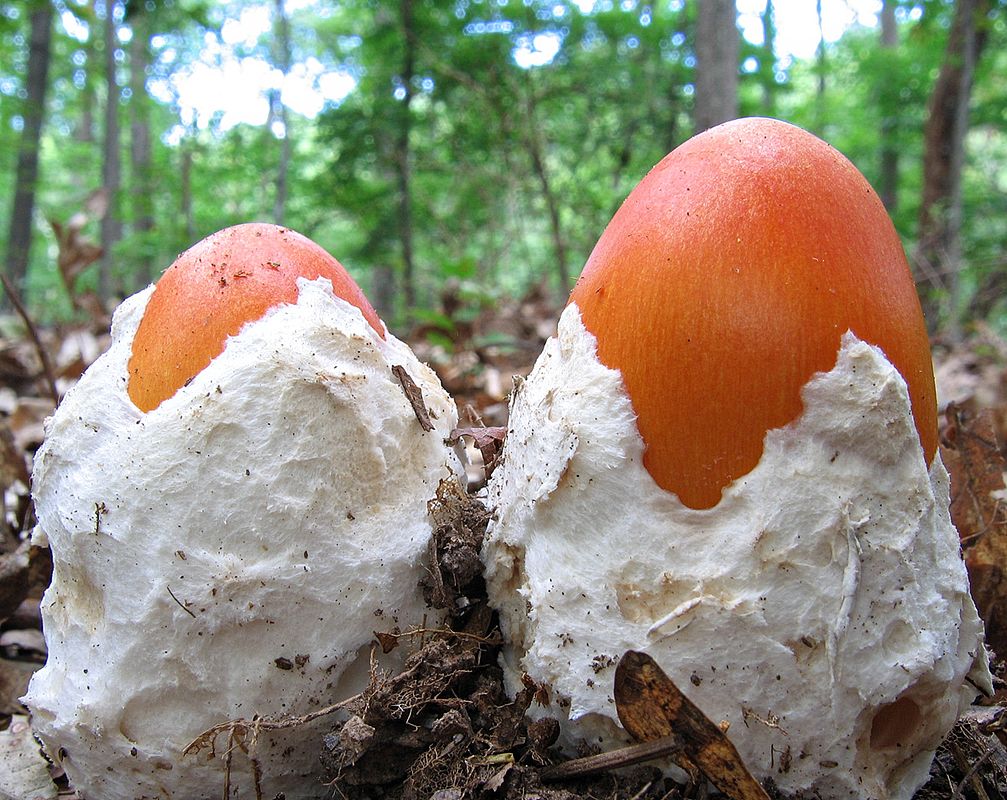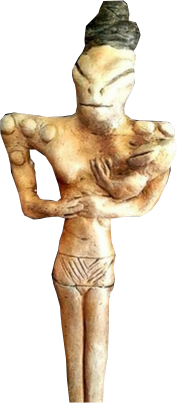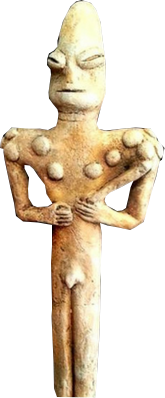Ancient Psychedelia: Alien Gods & Mushroom Goddesses
Online Book - Chapter 1, Page 14
Back to Online Book Mainpage / Next Page (Chapter 1, Page 15)
  Amanita Easter “Eggs” A disproportionate number of female-to-male figurines have been found at Stone-Age archaeological sites. At the time of the writing of The Great Mother (1955), Neumann reports that fifty-five female figures have been uncovered and only five male figures which are poorly designed and not typical of the style. (36) Male figurines only constitute two to three percent of all Old European figurines and therefore it’s possible to conclude that there was no such thing as an early male centered worship or idea or any sort in ancient civilizations. The only appearance we see in early times is that of the son, and he is in a subordinate relation to his much more developed mother. The male figure only exists in early figurines as a “new birth” from the goddess. Not as a deity worthy of worship or praise as the “creator,” though he was the “son” of the creator. (37) In the Cult of the mother Goddess, E.O. James writes: “Whether or not the goddess or goddesses who presided over the mystery of birth and its concomitants had a male counterpart as a son and partner cannot be determined from the available evidence. In the Harappa culture male gods, frequently horned, recur (38), but they do not appear to have been prevalent and seldom are brought into conjunction with goddesses in the iconography, as is also the case in respect of the village goddesses in modern India.” The male images we do see in early culture are not found in idols or figurines, but rather images from cave drawings and rock paintings and engravings and these are usually the characters of shamans or stag-headed men who are involved in dancing and sacred rituals of initiation. One such example is what some scholars and archaeologists call the “sorcerer” image from the cave of Les Trois Freres (Ariege), France. There is no preponderance though of male to female figures in the paintings and engravings. It may be fair to assume that the mythology had not yet developed around the principles of nature so therefore there was no focus on one principle as the “maternal guide” yet. The concepts of the earth mother as a mythology or story type idea were still in their very primitive imaginative stages and had likely not even begun to be developed yet. (39) The earliest figurines discovered, the layout of temples of worship and early mound works, would seem to indicate a focus on maternal qualities such as fertility, nutrition, childbirth and the raising of children. Dr. Mallowan, in Iraq, Vol. II writes: “there can be little doubt that fertility worship connected with a “Mother-goddess” cult must indeed be one of the oldest and longest surviving religions of the ancient world.” (40) |
  R: (9e) “Normal” Ubaid Culture. Iraq c. 5500-4000 BC (36) The Great Mother; An Analysis of the Archetype, Erich Neumann, Bollingen Series, 1974 (1955), p.95; (Gesammelte Werke ... BoHMERs, A. Die Aurignac Gruppe. Berlin, 1942. Bohmers, Die Aurignac Gruppe) (37) The Language of the Goddess, Marija Gimbutas, Harper Collins, 1991, p.175) (38) The Cult of the Mother Goddess, E.O. James, Barnes and Noble Books, 1994, p.34; (Marshall, op. cite., vol iii, pl. xciv, II; Mackay, op cite., vol. ii, pls. lxxii, 7; lxxvi, 5; Vats, Excavations at Harrapa, vol. ii, 1940, pls. lxxvi, lxxvii; cf. vol. i, pp. 293ff) (39) The Language of the Goddess, p.175 (40) The Cult of the Mother Goddess, p.24; Iraq, vol. ii, pt. 1, 1935, p. 87 (41) ibid, p.26-7; Wooley, Antiq. Journal, x, no. 4, 1930, pp. 338f., pl xcviii; The Development of Sumerian Art, 1935, pp. 37f., pls. 6a-f, b; Hall and Wooley, Ur Excavations, Oxford 1927, vol. i, p. 153 |
Go Back to Page 13